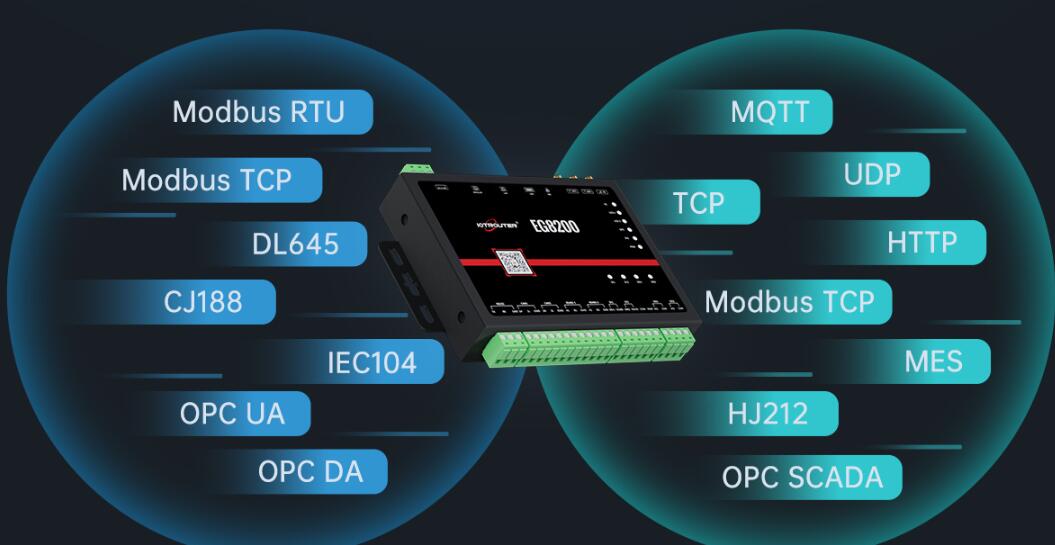What is a serial server? What are the basic functions?
A serial port server is a device that transfers data between a serial port (also called a communication/COM port) and an Ethernet local area network (LAN). It is bi-directional communication. Bidirectional communication allows each device to receive and send data. In the same way that serial devices use different pins to receive and send data, using the same pins limits communication to half-duplex, which means that information can only travel in one direction at a time. Using different pins allows full-duplex communication, in which information can travel in both directions at once.
The basic application function of serial port server can realise the bi-directional transmission of data between RS232/485 and Ethernet, where the RS232 and RS485 serial ports work independently at the same time without affecting each other.
And modbus gateway can also realise bidirectional communication function. On this basis Modbus gateway can also be used as a host. In the host mode, Modbus gateway will automatically query the slave according to the data required by the host and save it to the buffer.
The modbus gateway is a standard industrial communication protocol transmission gateway and is the more commonly used method of connecting industrial electronic devices today. modbus allows communication to be connected between many devices on the same RS485 network for data transfer. For example, in an agricultural greenhouse, the temperature or humidity data collected by sensors is transmitted to a remote control centre connected to a Modbus gateway, which monitors the data in real time and controls the site conditions in a timely manner.
The difference between modbus and serial server is mainly the following three points
(1) Use as host computer
As mentioned above, Modbus can be used as a host, and the slave mode of Modbus gateway is the same as that of serial server, so we won’t go into details here. When modbus gateway is used as a host, the data demanded by the connected serial host device is the main demand, and the terminal slave is queried. Usually Modbus can realise one-to-many (one host to many slaves) and many-to-many modes. The main point to note is that in the transmission process, Modbus gateway module does not do any protocol resolution, only the serial data sent to the network side.
(2) Storage function can be realised
Enabling Modbus storage function can speed up the query speed of network hosts, which is suitable for the mode of multi-host query. For example, when multiple hosts query a slave data, or a host needs to query data with high frequency, turning on Modbus storage function can save the time of serial port query faster and reduce the timeout time.
(3) Reporting function can be realised
According to the instruction set by modbus gateway, it actively queries the data to the serial port and uploads it to the network host actively.
Since modbus gateway has the function of bidirectional transmission, it can directly replace the serial server with modbus gateway to realise the networking demand in most cases where the serial port end is connected with Ethernet. While some serial servers come with modbus gateway function, but this function only realises modbus protocol transmission, and can’t be used directly as modbus gateway. Therefore, if you have a project that requires two-way serial data transmission and modbus protocol conversion, you can consider serial server or modbus gateway; if in addition to this, you also need to use modbus gateway as a host or use the storage function, you need to choose modbus gateway device.
